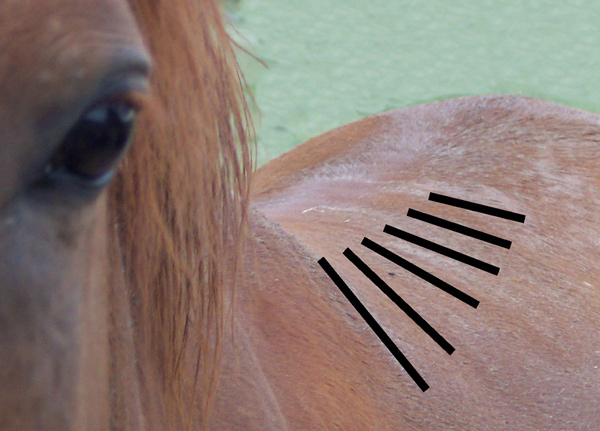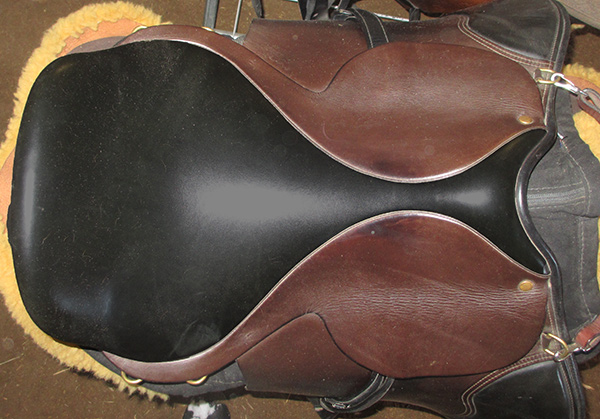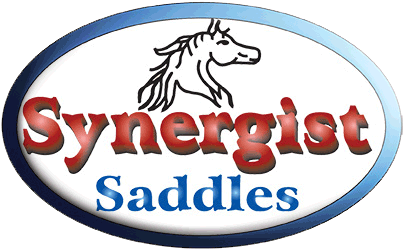 For a saddle maker twist can mean two different things. Since a horse or mule’s back is not the same from front to back, but angled steeper at the withers and flatter as they go back towards the loin, the bars of the tree must change angle along its length to match the shape of the animal’s rib cage. So twist on the animal’s side of the saddle refers to how the bars of the tree are narrower in the front and have a ‘twist’ in them that matches how most rib cages flatten out as they go back. I say most because there are a few that are shaped like a 55 gallon barrel set on it’s side with virtually no twist from front to back. Generally speaking the wider the animal’s back is, the less twist to the bars of the tree. So the bars of the tree must change “angle” along its length to match the shape of the horse or mule.
For a saddle maker twist can mean two different things. Since a horse or mule’s back is not the same from front to back, but angled steeper at the withers and flatter as they go back towards the loin, the bars of the tree must change angle along its length to match the shape of the animal’s rib cage. So twist on the animal’s side of the saddle refers to how the bars of the tree are narrower in the front and have a ‘twist’ in them that matches how most rib cages flatten out as they go back. I say most because there are a few that are shaped like a 55 gallon barrel set on it’s side with virtually no twist from front to back. Generally speaking the wider the animal’s back is, the less twist to the bars of the tree. So the bars of the tree must change “angle” along its length to match the shape of the horse or mule.
 Twist can also refer to the rider’s seat. We hear this term more from English riders but it still comes up in Western circles also. If you look straight down on an English saddle’s seat you will see that it is wide right where your seat bones set but narrower immediately forwards of this area. So twist in an English saddle is the narrowest part of the seat in front of where the rider sits. So when a rider says “I like a narrow twist”, they want a seat that is narrower in front of where they sit so it doesn’t spread them out too much.
Twist can also refer to the rider’s seat. We hear this term more from English riders but it still comes up in Western circles also. If you look straight down on an English saddle’s seat you will see that it is wide right where your seat bones set but narrower immediately forwards of this area. So twist in an English saddle is the narrowest part of the seat in front of where the rider sits. So when a rider says “I like a narrow twist”, they want a seat that is narrower in front of where they sit so it doesn’t spread them out too much.
An English saddle is always going to have a narrower twist in the seat than the same sized Western saddle. The reason is because of the difference in how the seats are built. An English seat is suspended over the tree by running webbing from the cantle block to the pommel. Padding is then added and covered with leather. A Western ground seat is built right on the tree. An English tree gives the saddle maker much more flexibility when designing the width of the seat. A Western seat is more or less determined by the twist of the bars of the tree.
Here’s the thing, (and isn’t there almost always a ‘thing’?). While a Western saddle maker can narrow the seat to mimic the English saddle seat there comes a point where narrow can go too far. There is no point in designing a extremely narrow seat in either an English or Western saddle if you have a very wide horse or mule. Your legs still have to spread out far enough to go around the animal’s rib cage! So the width of the animal’s rib cage should dictate the width and twist of the seat. The seat design must be appropriate for the width of the horse or mules back.
While we can narrow the twist on a Western saddle seat there comes a point where it just doesn’t make any sense. Your hips and legs are going to have to spread as wide as the horse or mule your are riding. Too narrow of a twist on a wide animal means you will end up perched on the center of the seat and have little or no contact with the seat farther down. That translates to no support for the inner thighs. So the bottom line: if you like a narrow twist to the seat, get a narrow horse!


Comments 1
Dave, this makes it so easy to understand. Thank you. Have always heard of a narrow twist no one could explain.
LOL, with the last 3 words!